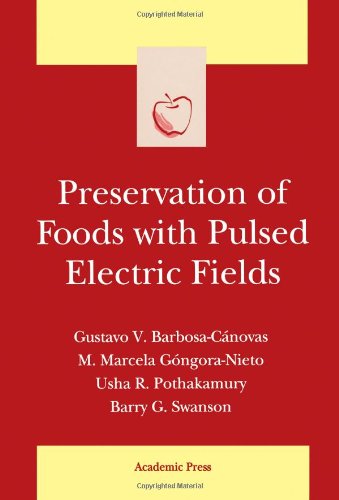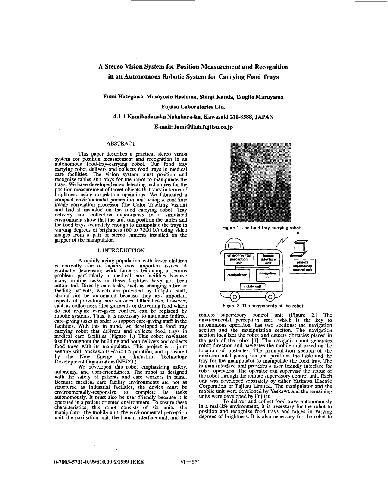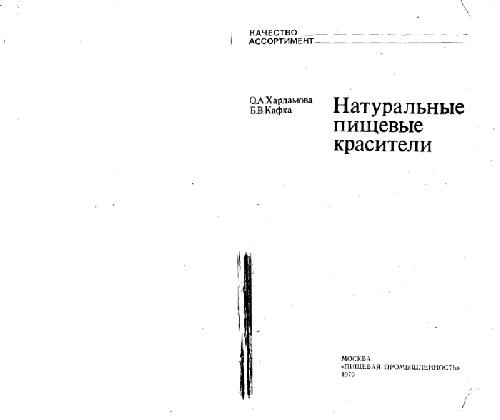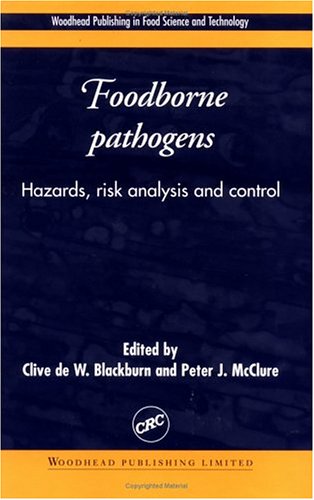Gustavo V. Barbosa-Canovas, Usha R. Pothakamury, M. Marcela Gongora-Nieto, Barry G. Swanson0120781492, 9780120781492, 9780080539461
Key Features
* Fundamentals of high intensity pulsed electric fields
* Design of PEF processing equipment
* Biological principles for microbial inactivation in electric fields
* PEF-induced biological changes
* PEF inactivation of vegetable cells, spores, and enzymes in foods
* Food processing by PEF
* HACCP in PEF processing
* PEF in the food industry for the new millennium
Table of contents :
Front Cover……Page 1
Preservation of Foods with Pulsed Electric Fields……Page 4
Copyright Page……Page 5
Contents……Page 8
Preface……Page 12
Acknowledgments……Page 14
I. Introduction……Page 16
II. Methods of Applying Electricity……Page 18
III. High-Intensity PEF Processing System……Page 19
IV. Basics of High-Intensity PEF……Page 22
V. Energy Requirements……Page 26
VI. Applications of PEF Technology in Food Preservation……Page 28
VII. Some Drawbacks of PEF……Page 29
References……Page 32
II. High-Voltage Pulsers……Page 35
III. Switches……Page 40
IV. Treatment Chambers……Page 43
V. Cooling System……Page 56
VI. Typical Measurements in a PEF System……Page 58
VII. Packaging and Storing……Page 59
References……Page 60
I. Introduction……Page 62
II. Transmembrane Potential……Page 63
III. Electromechanical Compression and Instability……Page 68
V. Viscoelastic Model……Page 70
VI. Hydrophobic and Hydrophilic Pores……Page 73
VII. Theories Based on Conformational Changes……Page 75
VIII. Electric Field-Induced Structural Changes……Page 76
References……Page 88
I. Introduction……Page 91
III. Electrofusion……Page 92
V. Electrical and Thermal Gradients Induced by PEF on Microbial Cell Membranes……Page 94
VI. Main Factors in Microbial Inactivation……Page 98
VII. Final Remarks……Page 118
References……Page 120
II. Microbial Inactivation……Page 123
III. Spore Inactivation……Page 153
IV. Standardization of Inactivation Assessment……Page 156
V. Enzyme Inactivation……Page 157
VI. Final Remarks……Page 166
References……Page 167
I. Introduction……Page 171
II. Microbial Analysis……Page 172
IV. Sensory Evaluation and Shelf-Life Studies……Page 173
V. Quality and Shelf-Life Evaluation of PEF Products……Page 174
VI. Final Remarks……Page 184
References……Page 185
I. Introduction……Page 187
II. Term Definitions in HACCP Systems……Page 188
III. The HACCP System……Page 189
IV. The HACCP System in PEF Processing……Page 190
V. Final Remarks……Page 197
References……Page 198
I. Introduction……Page 199
II. Commercialization……Page 200
III. Regulatory Aspects for the Implementation of PEF……Page 201
IV. The Future of PEF……Page 205
References……Page 206
Index……Page 208
FOOD SCIENCE AND TECHNOLOGY……Page 214







Reviews
There are no reviews yet.